#shubenacadie
Explore tagged Tumblr posts
Text
okay so there’s all this groundhog day stuff going around and I know I’m a day late to the party but I would like you all to know that we here in the canadian maritimes apparently have our own cute little weather predicting animal (and she’s apparently not the only one!)
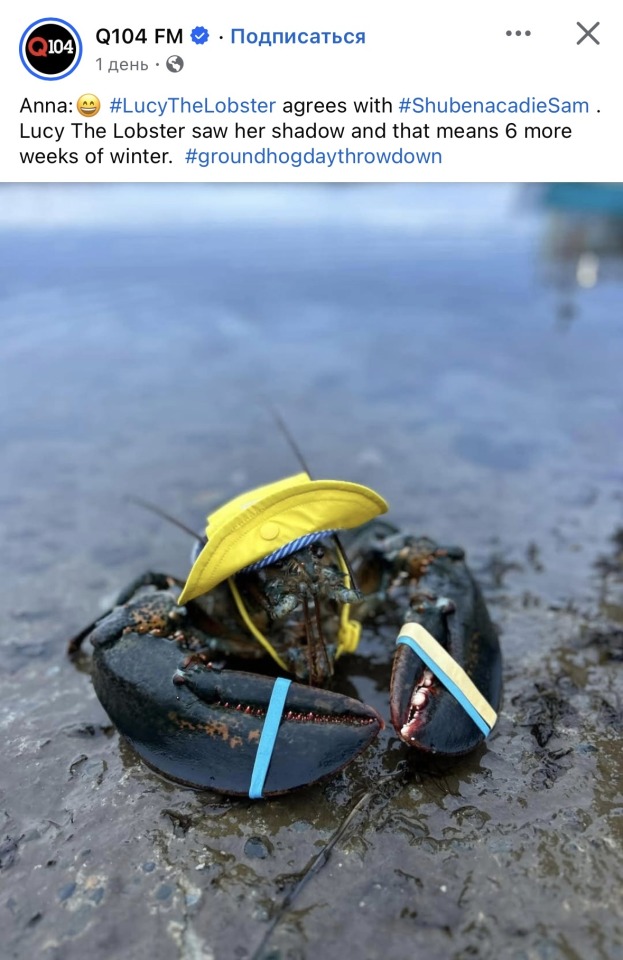
I! JUST! LOOK AT HER LITTLE SOU’WESTER HAT??? I’M !! I ONLY JUST FOUND OUT ABOUT HER AND I JUST
Lucy my beloved!
#also it appears she was right because we’re supposed to be hammered with more snow even just this week alone#groundhog day#lucy the lobster#Shubenacadie Sam is an actual groundhog btw
10 notes
·
View notes
Text
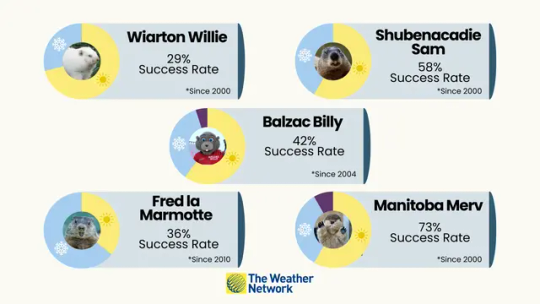
Groundhog Predictive Success Rate
#tous le monde connait Fred la Marmotte!#Balzac Billy and Shubenacadie Sam are great names. sorry Manitoba Merv....#Wiarton Willie has the worst rate#Groundhog#Groundhog Day
6 notes
·
View notes
Text

0 notes
Text
As a young girl at the Shubenacadie Residential School, Phyllis Googoo found a special way to hang on to her Mi'kmaw language: talking to ladybugs.
In the documentary Phyllis & the Ladybugs, Googoo explains the bugs were actually potato bugs. She would make roads for them in the grass and sing them lullabies.
"I'd take care of my babies. I'd say, 'Don't be afraid,' because I was afraid," she says in the documentary. "I wanted to be treated how I was treating the ladybugs."
The film was co-directed by Googoo and Ann Verrall. It follows Googoo's story from being forced to attend residential school at 4½ years old to leaving for the Vatican to meet with Pope Francis in March 2022 along with other residential school survivors.
...
"I think that's one of the things that really drew me to it is looking at how the imagination is a survival mechanism and how this very young child was able to engage her imagination to help herself and to survive in that environment."
395 notes
·
View notes
Text
- september 30th, national day for truth and reconciliation -


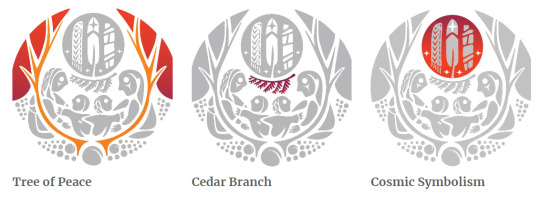

Survivors experienced horrific atrocities while prisoners in these institutions. It is important that this image show the love and strength that colonialism tried to steal from us. Despite genocide, we are still here – still fighting for justice and restitution, as true Warriors. - Dorene Bernard, Mi’kmaq Survivor who attended Shubenacadie Residential School

#chromatic voice#national day for truth and reconciliation#first nations#inuit#metis#missing and murdered indigenous women#mmiwcanada#residential schools#indigenous#turtle island#unceded land#survivor testimony#orange shirt day
1K notes
·
View notes
Text
He doesn't live in a sewer, his name isn't Donatello and he doesn't ride a skateboard. But little Root the turtle does get around on his own set of wheels.
The wood turtle came to live at the Museum of Natural History in Halifax last September.
Unlike most turtles, Root is missing his right front foot.
Heather McKinnon Ramshaw, the museum's animal care specialist, says she doesn't know how he lost the foot, but he's been that way for a long time. She says he was originally collected from the wild by Natural Resources Department personnel and brought into captivity 20 years ago — possibly because of his missing foot.
Root spends most of his time in his enclosure, which is filled with wood chips and has a container of water that he can swim around in.

But three times a week, staff at the museum take him out on a little stroll.
Early on, they noticed that as Root was tootling around, he was scraping his plastron, or bottom shell, on the floor.
"Because one leg is essentially shorter than the other one, we found that he was kind of clunking his shell down," McKinnon says. "There was some wear on the shell and we didn't want it to get worse, so he needed something to lift him up."

Enter Tessa Biesterfeld, a naturalist interpreter at the museum.
The museum had a Lego exhibit in December, and Biesterfeld had the idea to create a platform with wheels out of Lego pieces to lift Root up higher so his shell wouldn't get damaged.
The first incarnation used medical adhesive tape and a bandage to attach some wheels, but staff didn't want to have to stick something to his shell every time he went out for his constitutional. So Biesterfeld came up with the idea of using a removable dog harness along with the Lego platform and wheels.
"We thought that'd be so great because we know it's non-toxic, we know that we can replace the parts as we need, and should his shell change or grow, we can change the shape and size of that. It's very modular," says Biesterfeld.
The first day, Root had an unexpectedly speedy slide down a ramp, but quickly became accustomed to using the contraption.
"Now when I snap his harness on, it's like when he hears that snap, he's ready to go," says Biesterfeld.
With the help of his wheels, Root enjoys exploring different areas of the museum, and may even have a leg up on other members of his species.
"We didn't want to make a skateboard or make anything that would just have him zooming too unnaturally fast, but he's clearly going a little faster than the average wood turtle but he seems happy to do so. He's getting lots of great exercise," Biesterfeld says.
Root has spent most of his 20 years in captivity at the Oaklawn Farm Zoo in Aylesford, N.S., and, after the zoo closed at the end of 2023, at the Shubenacadie Wildlife Park.
But staff at the wildlife park decided he needed a new home because he was being a little too assertive with the other turtles, standing in the food dish and intimidating others, preventing them from eating. So he ended up at the museum.
McKinnon describes Root's personality as "very bold, brave, I don't want to say overbearing," but also a bit timid around people.
Root and Gus, the museum's famous, beloved centenarian gopher tortoise, have not met, partly because they may not get along, but also because turtles can pass diseases to each other.
But with Root's fancy wheels, it's possible the museum could have another shell-ebrity on its hands.
Wood turtles are a species at risk in Nova Scotia, so having one is special because the museum would never collect one from the wild, McKinnon says.
Wood turtles can live for 50 to 80 years.
"We may have him for a while, so we want to make sure he's comfortable," McKinnon says.
43 notes
·
View notes
Text
It's even funnier that Canada also has our own groundhogs for Groundhog Day. Not Punxsutawney Phil, Shubenacadie Sam in Nova Scotia is our most recognized, but we have some others. Fred la marmotte in Quebec (fun fact! The last Fred died on Groundhog Day 2 years ago!) Wiarton Willie, in Ontario, Manitoba Merv and Winnipeg Wyn in Manitoba, and BC has 3, Chopper, Marlu, and Can Isle Violet! But my favourite has got to be Balzac Billy! A groundhog mascot from Balzac Alberta made by a radio station!
do other countries have a groundhog day? do you all gather on February second and watch with bated breathe as a groundhog emerges from its hole? do you forecast the next six weeks of weather based on if the groundhog is frightened by its own shadow and returns to the hole?
272K notes
·
View notes
Text
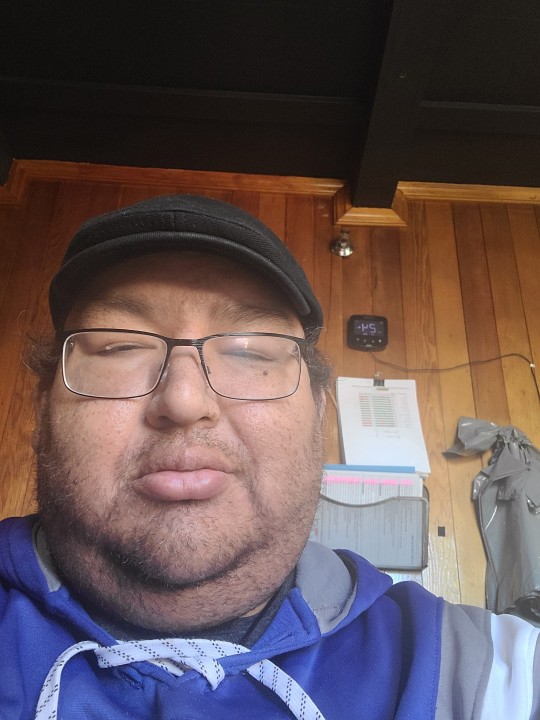

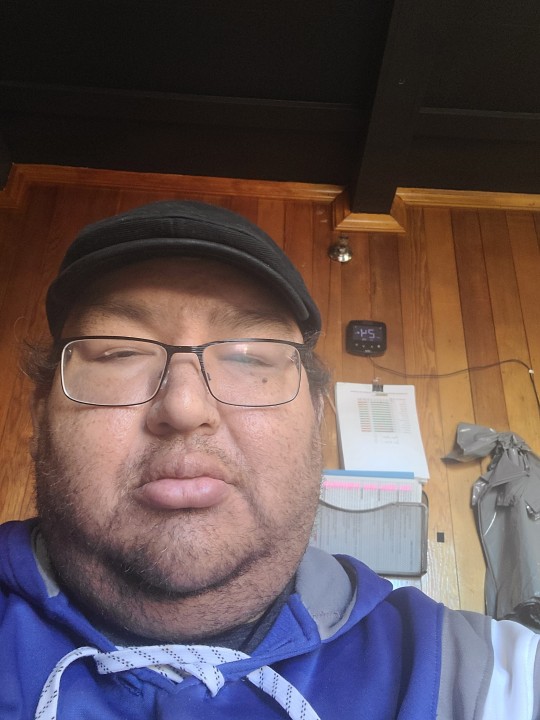
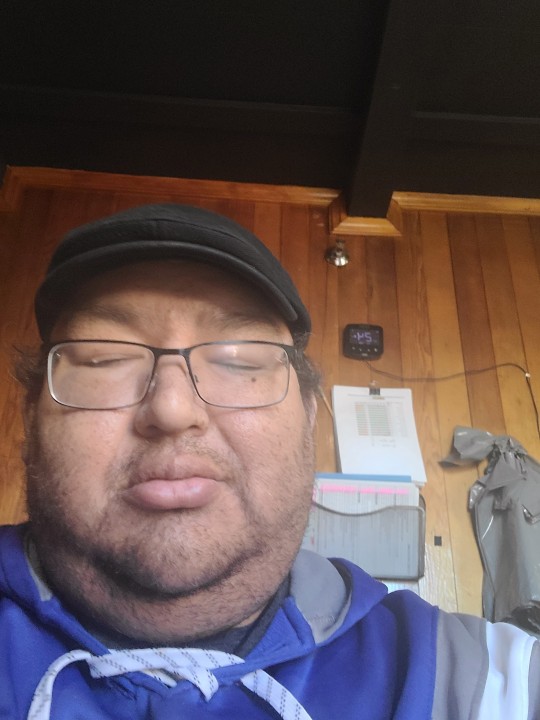
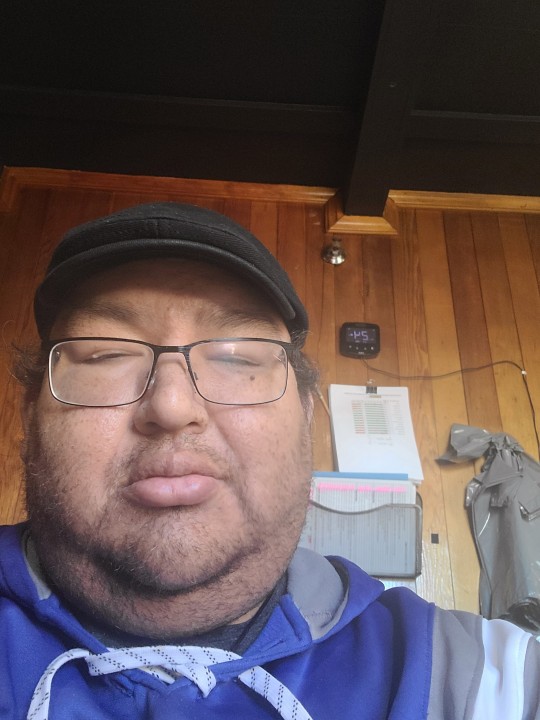
Eskasoni have taught me life skills to a degree. But learning all life skills like doing my taxes for GST and Carbon Tax, is another thing. I know that certain people want control over my finances and they don't care if I go hungry or want money for myself. So I gave up on getting better in terms of upgrades and updates on my online financial independence. I know there are scams and schemes and I don't trust anyone not letting me protect myself online. I find my aunties and uncles old school/Colonial system runarounds is tedious or quick. They don't keep me well informed or have any respect for me. They figure pass on their traumas and use a generational stereotypes and curses for control measures. They use a type of cultural ageism in their biased treatments and prejudicial distinctions and egocentric solipsism.
I've faced many troubles, problems and having lingering issues; I know that people don't want me to call them out because they are moral cowards. My whole world was surrounded by moral cowards; moral cowards with active addictions, moral cowards who are former addicts and moral cowards of bigotry. They don't want to save what pure love that my biological mother have created. Especially the Morrison family of Eskasoni. They would remind me that I'm weak and disempowered. I know that they dangle real power over me because they are moral cowards. Deniers of truths, deflectors of descendants' words, professional liars. I know that I need my biological mother back because she makes it alright. I have no rights to have my own saying.
I know that I have been dealing with toxic financial abuses, economic abuses and other abuses I've suffered as a child, as a earning teenager, in my early twenties and at Mawita'mk Society. I know that I don't have any respect from certain people because the culture of Mi'kmaqs dictates everything. I know that I didn't benefited from work or had my own banking system until I'd moved to We'koqma'q community; still I had financial abuses. The Morrison family of Eskasoni are good to force forgiveness and accepting that I won't get my money. Financial justice is their responsibility and there is no consequences.
They have the prejudicial authorities to decide what I need and what I have as a right. That's been the Morrison family of Eskasoni's permission system. I know that the Morrison family of Eskasoni, and Eskasoni's infrastructure wasn't adequate when I needed the resource, services, supports and benefits of Eskasoni. And I needed to have a fuller life, better quality of life and better family. There is no financial protection from people that are close ta ya. That's the toxic relationship easements they have with me: take a full mile when I gave them little to take. They set me up for financial burdens in the future and they expect full financial compensation for their upbringing and teaching.
Learning that they didn't really value me, for me and they expected monetary gains from this. My biological mother taught me genuine self-esteem, self-efficacy and personal leadership before she left this world. I know that I've been learning that I had it right before in a way but that's feeding the Morrison family of Eskasoni's ego and petty selfish interests. There wasn't any consequences for them abusing me in all sorts of ways when I started at my age of five years old. Why in the hell should I serve them?
This is a complex issue with a good/bad paradigm of a relationship. I have been silenced and didn't get any justice or they didn't get any consequences that I have been learning as a second generation Indigenous descendant from Shubenacadie Indian Residential School: I have been learning the culture of healing professionals, mental health care professionals and professors of psychological works. Learning that I have to fully appreciate my past, with full impactful healing and recovering, becoming emotionally literate, psycho-spiritually resilient, financially independent and professionally thriving. I have learned love and genuine self-esteem from a post-truth reality. Now it's my time to learn how the reality works for me instead of serving a bunch of hypocrites.
I know that I have been learning to talk about my past with a full impacts of hypersexual struggles, hyperagency/hypoagency struggles, addictional/poverty struggles and losing out on independence because my parents have allowed such influences to be in my life. Hometown is where the struggles of good and bad lays in my mind because because I was ruined by the hyper-reality of their addicts' and fiendish minds. I found agency, self-efficacy and personal leadership when my step uncle and biological mother and stepfather have greatly influenced me into mental health; with post-truth reality acceptance and forgiveness.
I've been active since I was five years old. I'd kind of learnt about sexuality through online, credentialed sourced sites but than again there is no room for truth online. There is professional liars/truth explainers that have been debunked and discredited over the years. There have been public controversies and a lot of people talking shit because they hate. I've been online since I was in the late 90s/early 2000s and I have been learning there have been public controversies over anything. Post-truth realities that couldn't get the full discourse and disclosure of the book because you would get black-listed for Indigenous truths.
I've been trying to accept my past life in terms of full impactful truths and facts. And heal from that for my stepfamily(adoptive family/mixed family), bloodline(relatives and close childhood friends), extended family(Mawita'mk Society and associations). I have a lot of people caring for my truths and facts. Learning that I need to say it in court in order to get the full impacts. I've been trying to heal, forgive and love without the courts. They would tear away the family and that concept/philosophy is complex: family because it's more than a lifestyle, it's a way of life. It's been a love/hate relationship since I could understand relationships, loyalty and respect.
There is a ayahuasca tea (psychedelic) that I wanted to try out but scared I would lose my mind. Schizophrenia is a complex disorder, much as addiction and grief are complex processes. I know from life experience healing from my culture and tradition. I've been learning that Eskasoni Rehab and Cultural Supports, or Mi'kmaq culture is a healing journey of my people. If they are emotionally brave to sober up and past dry drunk and that paradigm shift. I've been through the grief of an era of addictional/poverty struggles and a good way of working.
1 note
·
View note
Text
Also this, but for place names on the east coast of Canada.
Tatamagouche, Whycocomagh, Ecum Secum, Musquodoboit, Kejimkujik, Miramichi, Chedabucto, Shubenacadie, Penobsquis, Aroostook, Cobequid.
Nova Scotians know if you're from out of town based on whether or not you can pronounce these place names correctly (albeit bastardized)
Also in eastern Ontario: Etobicoke, Kapuskasing, Kitchissippi, Mississauga, Madawaska, Gananoque, Bobcaygeon, Scugog, Muskoka, Napanee, Oshawa.
Also, literally Saskatoon, Saskatchewan; Winnipeg
i do desperately need everyone on this website especially people who arent american but want to rag on america to familiarize themselves with the basic romanized spelling conventions of native american languages because every day i come on here and i see people making fun of massachusetts or connecticut or mississippi or passamaquoddy or mashpee or nipissing and its like PLEASE. PLEASE THEY ARENT ENGLISH WORDS. PLEAAAAASEEEEEUUUHHH. USE YOUR MINDS TO IDENTIFY WHEN A WORD LOOKS LIKE IT MAY NOT BE ENGLISH. I DONT CARE IF YOU MAKE FUN OF AMERICA JUST PLEASE STOP BEING RACIST WHILE YOU DO IT
59K notes
·
View notes
Text
I Lost My Talk - A Child's Plight
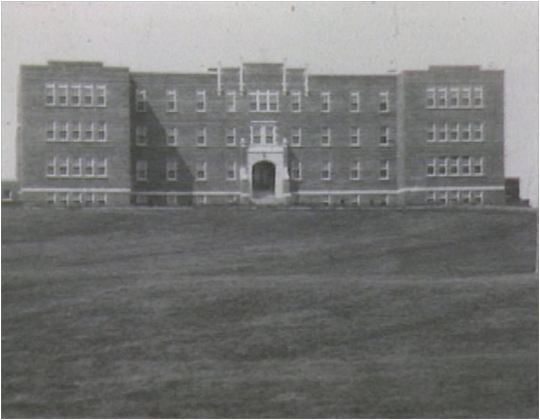
ID: An image of Shubenacadie school
Frankly, I don’t know where to begin. Essays, stories, they come easily to me. Putting argument or imagery down on paper feels like child’s play compared to this, for this is to convey my soul. That’s what poetry is, isn’t it? Poetry is the connection of souls, across time and thought and culture.
What is voice? A child could answer. Your voice is what you use when you talk, of course. But what is talk? And what happens when you lose it?
Let’s take a look at this poem:
I LOST MY TALK – Rita Joe
I lost my talk
The talk you took away
When I was a little girl
At Shubenacadie school.
You snatched it away:
I speak like you
I think like you
I create like you
The scrambled ballad, about my word.
Two ways I talk
Both ways I say,
Your way is more powerful.
So gently I offer my hand and ask,
Let me find my talk
So I can teach you about me.
Perhaps a child could answer that question. Perhaps too many could. But only a few have put it into words, and thus there are only a few windows through which we can look. If you skipped the poem, read it. I don’t think it’s possible to convey, with so many words, what Rita Joe conveys in so few. Should I attempt, I know I’ll only ruin it. Thus, you must read it.
Look at the title: “I Lost My Talk.” You can almost hear the child’s whimper, almost see the hands clutched to her chest. The phrasing is mournful, short with a childlike simplicity. It’s an epigram—it sketches out the atmosphere of the poem, even before it begins. Taste these sentences again: “I speak like you/I think like you/I create like you.” She uses parallelism, both in sentence structure and repetition. By repeating the word “like”, she also creates repetition. She speaks, she thinks, and she creates—Rita Joe uses these things to identify herself as a fellow human in a synecdoche. “Two ways I talk/Both ways I say/Your way is more powerful.” Here we see parallelism in structure again, as well as repetition by the repetition of “way”. “Way” in this case is a metaphor for a way of life. Rita Joe has learned the hard way that it is the white man’s path that holds the most influence, a tragedy and unfairness that she now presents before us. In addition, the First Nations would pass on their culture and wisdom through ballads and by word of mouth. Thus, the “scrambled ballad” in the poem is a symbol of the author’s culture and how it was lost. “Shubenacadie school” gives us an allusion to a residential school and the horrors experienced within. Thus, we can conclude that the people the author speaks to in an apostrophe are her absent abusers, or at least those who inherited their legacy. Finally, “offer my hand” holds connotations for reconciliation, peace, and forgiveness.
The poem itself is simple, without a rhyming or syllable scheme. It is written in free verse with a scattering of iambic phrases, such as “I lost my TALK” and “The talk you took AWAY” (emphasis added). The phrases are short, the words arranged in almost a song-like way, like the ballad mentioned in the poem. The author uses enjambment: “Let me find my talk/So I can teach you about me.” The use of enjambment emphasizes talk and connects the two; she wants to find her talk, her culture, not only for herself, but to share. The simple structure and the connotations of her word choice reminds the reader of the little girl that was snatched away from her family and plunged into a harsh and unforgiving place that cared not about her wellbeing. Does not your heart ache for this lost childhood? Mine certainly did.
But what is this poem about, besides mourning a lost childhood, a forgotten history? We find the answer in the last few stanzas. “So gently I offer my hand and ask/Let me find my talk/So I can teach you about me.” In these few words we find the poem’s theme of grace, forgiveness, and hope for reconciliation. After all, the first step towards peace is to understand one another, and how can they understand if nobody explains? We see the little girl, now a woman, surveying the ashes of her people and yet not growing bitter from them, but offering her hand to her absent abusers. Thus, the primary theme is solidified as loss and forgiveness, segregation and reconciliation. We see this reflected in the title: “I Lost My Talk.” Her voice isn’t angry, or vengeful, but mourning, and in the poem’s flow, we see her hope.
This is my favorite line: “The scrambled ballad, about my word.” As I mentioned before, ballads were used to pass on culture and history. “Word” here seems to be a metaphor for her culture and history. The author lost her heritage—not because it was completely gone, but because it was scrambled, muddled, made unwhole. I love it because it’s simple, it’s meaning half-hidden but rich. It shapes the poem. It builds its meaning. I wish I could ask Rita Joe if she ever felt like she got her culture back. Did she ever un-scramble that ballad? Perhaps she managed to find a person who could decipher the words and make them understandable again. Perhaps the plight of the lost child isn’t permanent for them all.
We see Rita Joe’s resilience all the more when we consider what Shubenacadie School really was. It was the only residential school established in the Maritimes, and from the day it opened it had issues with bad construction, terrible maintenance, and overcrowding. Children operating laundry and kitchen equipment led to some of them having serious injuries. In 1934, there was even a federal inquiry after nineteen boys were flogged until they scarred permanently. The judge in charge of the inquiry dismissed it, as “they got what they deserved.” (NCTR, n.d.) This was the place Rita Joe endured. This was the place where Rita Joe’s voice was snatched away. And, isn’t she one of thousands? Though she may have regained her voice, many never did.
Rita Joe was a little girl, once. She mentions this in her poem. It makes us wonder about the psychological impact this whole ordeal had on her. Did she struggle with anger? Did she struggle with fear? Though we see no evidence for the former, it does not mean that it didn’t happen. As for the latter, we may ask: why wouldn’t she struggle with fear? Perhaps she continued to have lasting psychological trauma, her mind locking her once more, perhaps even decades later, in the fear of a little girl. The violent words she uses, such as “lost”, “snatched,” and the begging cadence of the second paragraph may hint at such scars.
In identifying herself as once being a little girl, Rita Joe also draws attention to her gender. However, gender doesn’t really play a big role in the poem as a whole. One could even argue that it would be easy to change the words from “little girl” to “little boy” without changing the meaning or theme. However, it is worthy to note that as an indigenous woman, Rita Joe would have been vulnerable in ways she wouldn’t have been as male. In addition, the gentleness portrayed would typically be attributed easier to women than to men, as males would archetypically be portrayed as more vengeful, though this is not universal. Ultimately, we see from the other lines of the poem that it is not about man contesting with woman, but rather the unfortunately common archetype of human against human, race against race, First Nations against white, and so on. And thus, in leading us through this archetype, Rita Joe guides us to the conclusion that we’re not different after all.
Rita Joe learned to survive in the harsh world she was plunged into: “Two ways I talk/Both ways I say/Your way is more powerful.” Given her race as First Nations and her reference to Shubenacadie school, her childhood background could be assumed to be poverty or working-class. A quick Google search shows that to be true: she was an orphan by the age of ten and was forced into foster care (The Canadian Encyclopedia, 2017). She had no power, no money, a despised as a woman and despised as a First Nations survivor. But she held on to her identity as a human and didn’t let them dehumanize her: “I speak like you/I think like you/I create like you.” Throughout history, vengeance was considered a trait of resilience, but here we see true resilience in her forgiveness: “So I gently offer my hand and ask/Let me find my talk/So I can teach you about me.”
Poetry is timeless, and this one, with its message of a scrambled culture, the evils of racism, and hope of reconciliation is no different. Maybe, like me, you sometimes feel like the people of long ago were very different from us. But that is a lie—we all speak, we all think, we all create. In putting her story into words, Rita Joe reminds us that their plight is still relevant, and that they still matter.
To learn more:
youtube
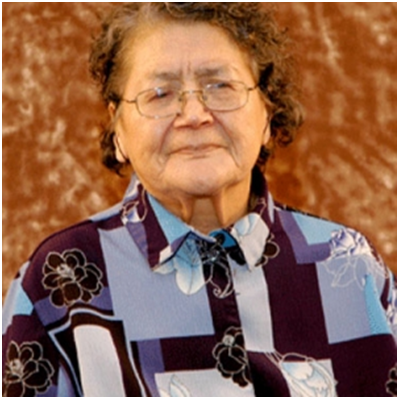
Rita Joe – 1932-2007
------------
Sources
CBC. (n.d.) The Shubenacadie residential school operated from 1930 to 1967. [Image] Retrieved December 6, 2024, from https://i.cbc.ca/1.6047377.1687271321!/fileImage/httpImage/image.jpg_gen/derivatives/original_1180/the-shubenacadie-residential-school-operated-from-1929-to-1967.jpg
Joe, R. (2007). I Lost My Talk. Poetry in Voice. Retrieved May 3, 2022, from https://www.poetryinvoice.com/poems/i-lost-my-talk
National Arts Centre. (2024). Rita Joe, C.M. [Image] Retrieved October 31, 2024, from https://nac-cna.ca/en/bio/rita-joe
National Center for Truth and Reconciliation. (n.d.) Shubenacadie (St. Anne’s Convent) Retrieved November 15, 2024, from https://nctr.ca/residential-schools/atlantic/shubenacadie-st-annes-convent/
The Canadian Encyclopedia. (2017). Rita Joe. In The Canadian Encyclopedia. Retrieved October 31, 2024, from https://www.thecanadianencyclopedia.ca/en/article/rita-joe
1 note
·
View note
Text
The Importance of Team Building in New Brunswick
In today's fast-paced corporate environment, fostering effective collaboration and communication among team members is essential for success. Team building New Brunswick is increasingly gaining traction as organizations recognize the need for cohesive teams that can collaborate seamlessly. The vibrant culture and diverse landscapes of New Brunswick offer the perfect backdrop for strategic team-building exercises that not only enhance productivity but also strengthen interpersonal relationships.
When organizations in New Brunswick consider team-building activities, the options are plentiful. From outdoor adventures like hiking in the Fundy National Park to canoeing across the Shubenacadie River, these activities not only promote teamwork but also allow employees to bond in a relaxed environment. Such adventures cultivate trust and open lines of communication, which are vital for effective teamwork. This experiential learning in a natural setting boosts morale and fosters a sense of belonging within the team.
Another significant aspect ofteam building Moncton lies in the charming city’s ability to host corporate events designed for building camaraderie. The availability of modern facilities in Moncton allows companies to organize workshops, training sessions, and team-building retreats that focus on developing essential skills such as communication, problem-solving, and conflict resolution. These structured activities encourage teamwork and help team members appreciate each other's strengths and contributions.
Incorporating playful challenges—like escape room experiences—into team building New Brunswick initiatives can significantly enhance the work culture. Challenges that require strategic thinking and collaboration not only inject excitement into the day-to-day grind but also encourage team members to strategize and think outside the box together. This type of bonding experience can reinforce the collective identity of the team and motivate individuals to perform at their best.
Moreover, walking through the scenic beauty of New Brunswick can serve as a perfect metaphor for navigating challenges in the workplace. The breathtaking landscapes of the region can inspire creativity and innovation. Organizing a “team trek” can be a refreshing break that allows employees to discuss goals, brainstorm ideas, and share feedback—ultimately leading to smarter solutions for work-related challenges. The amalgamation of natural elements and team-building techniques works wonders in rejuvenating the team spirit.
In New Brunswick, mentors and facilitators play a vital role in ensuring that team building Moncton initiatives are impactful. These professionals design tailored programs that fit the specific needs of an organization, ensuring that all activities align with company values and objectives. Such programs can range from leadership development to fostering diversity within teams, thereby promoting an inclusive and empowering environment.
The impact of well-executed team-building activities can be profound. Teams that engage in these experiences often report increased job satisfaction, improved morale, and enhanced communication skills. These benefits correlate with higher productivity levels and lower turnover rates, which are crucial for the sustainability of any organization.
In conclusion, investing time and resources intoteam building New Brunswick is not just an option but a necessity for organizations aiming to thrive in a competitive market. By fostering connection and collaboration through diverse activities, teams grow closer, more resilient, and ultimately more effective. The blend of New Brunswick's stunning natural beauty and the structured approach of team-building initiatives provides an ideal environment for organizational growth and success.
0 notes
Text
Electric Pines Music Festival, 2024
Electric Pines Music Festival was last weekend in Shubenacadie, Nova Scotia. I played a set from 10-11 PM on Sunday, Sept 1. These video clips were kindly shared by DJ & Producer Josette, @josette.ok who also played a set on Saturday.
0 notes
Text
Exactly.
Although, it is a kind of marmot (genus Marmota), and there are marmots in Europe and Asia (and other parts of NA). Mostly in mountains and really cold areas though. Ground squirrels as a whole are even more widespread.
But also the Groundhog Day lore now tends to focus on specific groundhogs or rather lineages of groundhogs. Notably Punxsutawney Phil, also some others like Wiarton Willie, Shubenacadie Sam, Jimmy the Groundhog, Dunkirk Dave, and Staten Island Chuck. Which are all in the US. Seem to be some in Canada as well.
The Wikipedia entry for Groundhog day does mention this:
The Germans had a tradition of marking Candlemas (February 2) as "Badger Day" (Dachstag), on which if a badger emerging from its den encountered a sunny day, thereby casting a shadow, it heralded four more weeks of winter.[citation needed]
The original weather-predicting animal in Germany had been the bear, another hibernating mammal, but when they grew scarce, the lore became altered.[10] Similarity to the groundhog lore has been noted for the German formula: Sonnt sich der Dachs in der Lichtmeßwoche, so geht er auf vier Wochen wieder zu Loche ("If the badger sunbathes during Candlemas-week, for four more weeks he will be back in his hole").[a][11] A slight variant is found in a collection of weather lore (Bauernregeln, lit. "farmers' rules") printed in Austria in 1823.[12]
As well as some similar ideas in other areas (German immigrants in Pennsylvania are the origin in the US) . But doesn't sound like other places have made it into a big deal day like the US groundhog day.

Buddy most countries don't even have groundhogs. Basically just Canada and the US have groundhogs
5K notes
·
View notes
Text
Wiarton Willie has predicted an early spring, matching similar predictions from other weather prognosticating groundhogs. In front of a large crowd in the town of Wiarton, Ont., on Friday morning, Willie told South Bruce Peninsula Mayor Jay Kirkland he did not see his shadow, signalling an early spring. It matches predictions made by Shubenacadie Sam in Nova Scotia, Fred la marmotte in Quebec and Punxsutawney Phil in Pennsylvania. The lone dissenting voice among weather prognosticating animals was Lucy the Lobster in Barrington, N.S. She saw her shadow and predicted "six more weeks of wonderful winter."
The mammals say early spring!
4 notes
·
View notes
Text
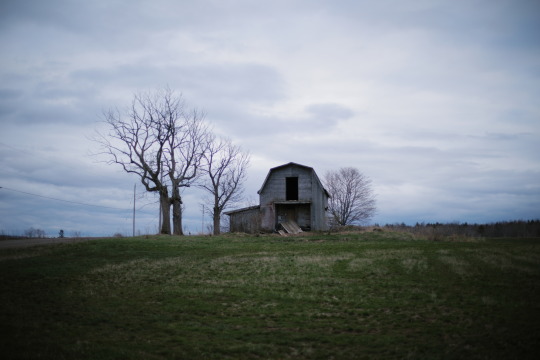
LIMBO OF SPRING The wind came howling all evening off the Shubenacadie River, blowing unimpeded through branches still bare of leaves. With the chill so hard and heavy through me, it's tough to believe that the next two weeks will bring a full canopy of green. It's the last gasp of dereliction's understanding neighbours. Dead buildings and dead limbs, and only one will come back yearly. The dark limbo of spring is a good six weeks in my part of the world, from when the calendar ticks over, till when the bugs wake up and everything gets growing. I've learned to love the loneliness. It seems to run deeper through me, even more than autumn with life ending, or winter with it still so far away. Spring has a pending promise, and it seems to wake the weight of all the others that can't come true. Beauty makes the best of it in me. April 29, 2024 Princeport, Nova Scotia Year 17, Day 6014 of my daily journal.
0 notes